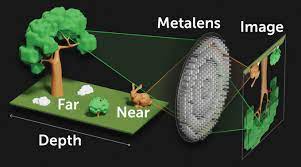
Breaking News
 Silver up over $2.26... Today! $71.24 (and Gold close to $4500)
Silver up over $2.26... Today! $71.24 (and Gold close to $4500)
 GARLAND FAVORITO: More and more fraud from the 2020 election in Fulton County, Georgia...
GARLAND FAVORITO: More and more fraud from the 2020 election in Fulton County, Georgia...
 Rep. Matt Gaetz tells Tucker Carlson that agents of the Israeli govt tried to blackmail his...
Rep. Matt Gaetz tells Tucker Carlson that agents of the Israeli govt tried to blackmail his...
 Trump: We need Greenland for national security… you have Russian and Chinese ships all over...
Trump: We need Greenland for national security… you have Russian and Chinese ships all over...
Top Tech News
 Travel gadget promises to dry and iron your clothes – totally hands-free
Travel gadget promises to dry and iron your clothes – totally hands-free
 Perfect Aircrete, Kitchen Ingredients.
Perfect Aircrete, Kitchen Ingredients.
 Futuristic pixel-raising display lets you feel what's onscreen
Futuristic pixel-raising display lets you feel what's onscreen
 Cutting-Edge Facility Generates Pure Water and Hydrogen Fuel from Seawater for Mere Pennies
Cutting-Edge Facility Generates Pure Water and Hydrogen Fuel from Seawater for Mere Pennies
 This tiny dev board is packed with features for ambitious makers
This tiny dev board is packed with features for ambitious makers
 Scientists Discover Gel to Regrow Tooth Enamel
Scientists Discover Gel to Regrow Tooth Enamel
 Vitamin C and Dandelion Root Killing Cancer Cells -- as Former CDC Director Calls for COVID-19...
Vitamin C and Dandelion Root Killing Cancer Cells -- as Former CDC Director Calls for COVID-19...
 Galactic Brain: US firm plans space-based data centers, power grid to challenge China
Galactic Brain: US firm plans space-based data centers, power grid to challenge China
 A microbial cleanup for glyphosate just earned a patent. Here's why that matters
A microbial cleanup for glyphosate just earned a patent. Here's why that matters
 Japan Breaks Internet Speed Record with 5 Million Times Faster Data Transfer
Japan Breaks Internet Speed Record with 5 Million Times Faster Data Transfer
Record-breaking camera keeps everything between 3 cm and 1.7 km in focus

A shallow depth of field, for example, would keep the subject sharp but blur out much of the foreground and background. Now, researchers at the National Institute of Standards and Technology have taken inspiration from ancient trilobytes to demonstrate a new light field camera with the deepest depth of field ever recorded.
Trilobytes swarmed the oceans about half a billion years ago, distant cousins of today's horseshoe crabs. Their visual systems were quite complex, including compound eyes, featuring anywhere between tens and thousands of tiny independent units, each with its own cornea, lens and photoreceptor cells.
One trilobyte in particular, Dalmanitina socialis, captured the attention of NIST researchers due to its unique compound eye structure. Fossil record examination indicates that this little guy had double-layer lenses throughout its visual system, unlike anything else in today's arthropod kingdom, and that the upper layers of these lenses had a bulge in the middle that created a second point of focus. That meant Dalmanitina socialis was able to focus both on the prey right in front of it and the predators that might be approaching from farther off.
The research team decided to see whether it could apply this kind of idea to a light field camera. Where regular cameras basically take in light and record color and luminance information across a two-dimensional grid, light field cameras are much more complex, encoding not just color and luminance, but the direction of each ray of light that enters the sensor.



